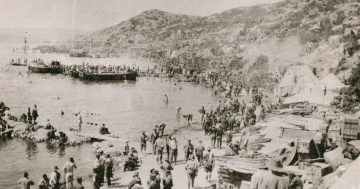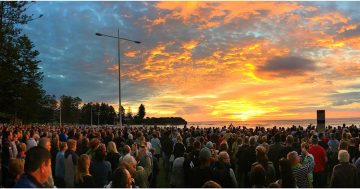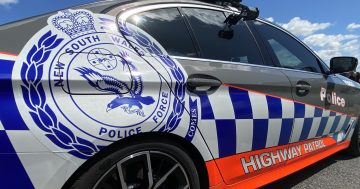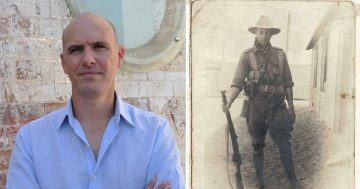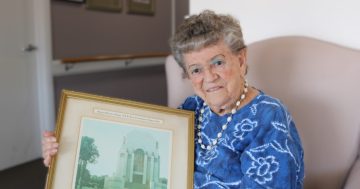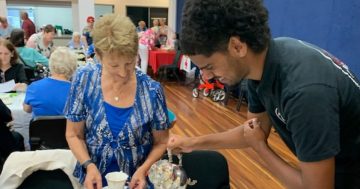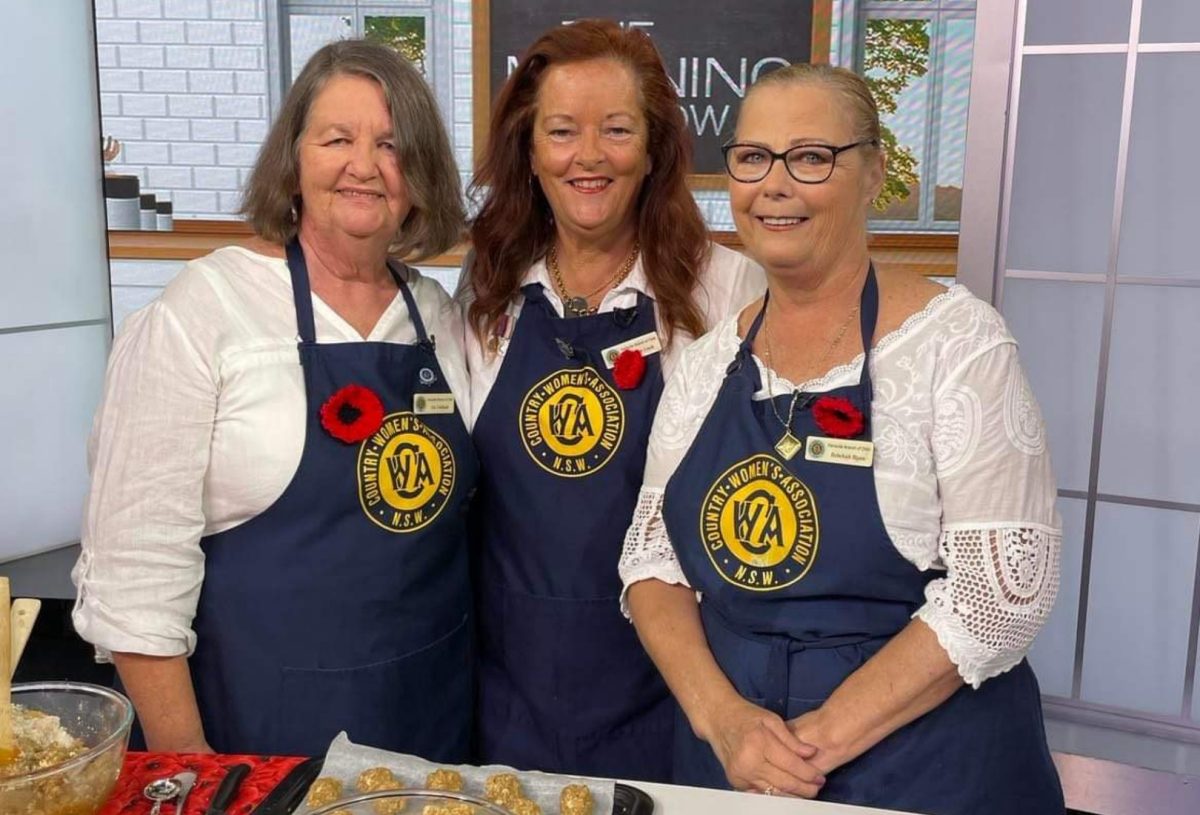
CWA Keiraville branch members Liz Corfield, Marion Cook and Rebekah Ryan cooking Anzac biscuits on The Morning Show for Anzac Day last year. Photo: Supplied.
Amid the ongoing debate over the preferred texture of Anzac biscuits — soft, chewy, or crunchy — the baking process can often feel like a game of chance.
For Marion Cook, the Country Women’s Association (CWA) Keiraville branch treasurer and publicity officer, baking the biscuits is akin to a “lucky dip,” yielding varied results despite using the same recipe each time.
As they prepare to showcase their baking skills on Anzac Day on Network Ten’s The Morning Show, the question is: Which texture will Marion and her fellow branch members, Rebekah Ryan and Jenny Anderson, achieve this time?
Marion said they were asked a year ago to join the nationally broadcast TV show for cooking segments, having appeared during last year’s Anzac Day.
“We did the Anzac Day show and showed everyone how to cook Anzac biscuits and talked about the traditions,” she said.
“From there, we’ve gone on to do lamingtons, and we’re doing sausage rolls in a couple of months’ time.
“I’ve been teaching my grandkids to cook since they were in nappies, and I’ve got pictures of them cooking with dummies in their mouths.”
Marion said the original Anzac biscuit recipe included ingredients that wouldn’t spoil, which resulted in a hard and crunchy biscuit that was then suitable to be sent abroad to war as a substitute for bread.
She said it included plain flour, butter, rolled oats, brown sugar, caster sugar, water, golden syrup and bicarbonate of soda, with desiccated coconut not in the original recipe.
“Apparently, the soldiers would break them into water and they would make a type of porridge with them,” she said.
“Another thing they could do was soak them in water and add jam and then they’d bake them over a fire and make a jam tart.
“When they were first made, they were known as Anzac wafers or tiles, and they were also called soldiers’ biscuits.”
She said today the recipe was often adapted to cater to someone’s desire for chewy, crunchy or soft, a lot of which was dependent on the oats.
“If you use instant oats, that can make them spread too much, and if you want to make them soft and chewy, you take out the brown sugar and add more white sugar,” she said.
“I have to say, I could use the same recipe every time I make them and I could get a different result.
“Sometimes they spread into each other and the last lot I made they were like ones you’d send to war,” she said, laughing.
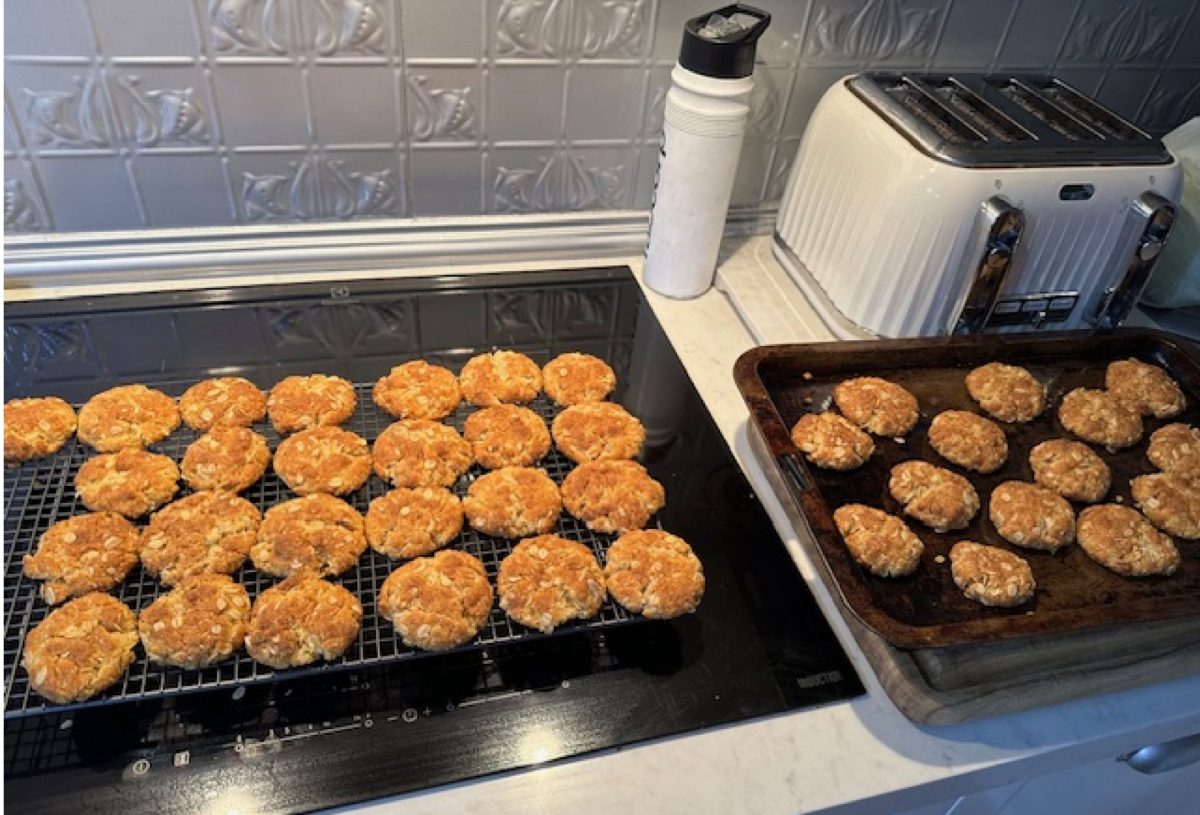
One of Marion Cook’s latest Anzac biscuit bakes, which she described as “crunchy but tasty”. Photo: Supplied.
“They were made by women’s groups, girlfriends and wives and I did read somewhere that they’d make them quite hard and they’d put a message in them by writing something on them.
“I don’t know how true that is, but I know the soldiers looked forward to them and they were a special treat.”
She said it was important the Anzac biscuit tradition was now kept alive.
“Between the years of about 1960 and 1980, there was less and less people making and having Anzac biscuits because there was this period where people didn’t want to commemorate war,” she said.
“I have gone to the Anzac march probably every year of my life as a child; as a mother I took my young kids to the march, and then they started marching with their grandfather’s medals.
“I think people are now really recognising what it was all about, the effort; they’re commemorating their ancestors and what happened.
“Anzac biscuits have really come back into the mainstream.”
She said the connection with the CWA and Anzac biscuits didn’t come from World War I, with CWA not formed until 1922.
“During the Depression years, the CWA helped people with food and clothing,” she said.
“During World War II, the CWA played a significant role in supporting the war effort and established a reputation for being reliable at a time of national crisis.
“They would have sent off Anzac biscuits then.”
However, she said with the availability of refrigeration then, there was less demand for Anzac biscuits compared to other perishable items they could send.
“In 1992, the CWA was awarded the RSL Anzac Peace Prize in recognition of their outstanding effort in promoting international understanding and contributing to world peace in accordance with the best traditions exemplified by the Anzac spirit,” she said.
“So I wouldn’t say that CWA had a role in the beginning with Anzac biscuits but I can think of a couple of people in our Keiraville group who make Anzac biscuits for different RSL clubs every Anzac Day.
“Our Keiraville group also has an order to make 250 Anzac biscuits for a local RSL club for this Anzac Day.”
Having cooked them for her own sons as they grew up, she said they were the perfect treat.
“They’re ridiculously easy to make and everything in them is a staple from your pantry, so if you have someone coming in half an hour you can whip up a batch and have them smelling beautiful and ready as they walk in the door.”










